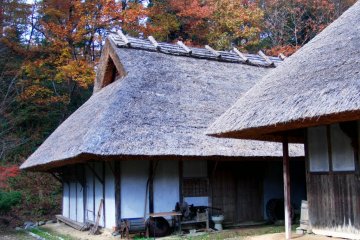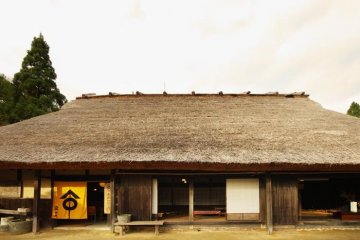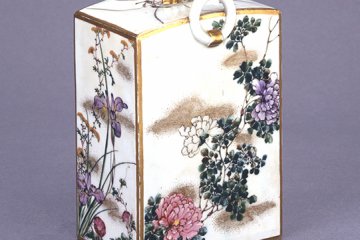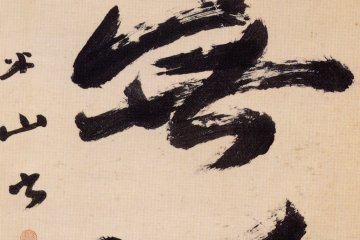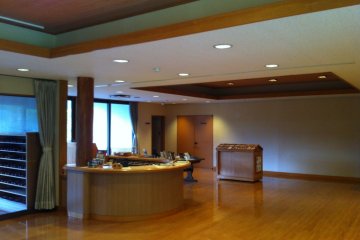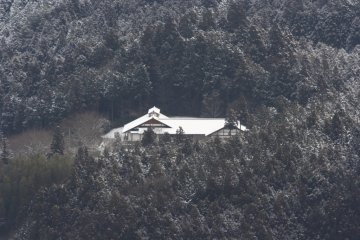Kuma Museum of Art (町立久万美術館) sits on the shoulder of a wooded mountain in the area known as Kuma Highland, a short but steep drive from Tobe. It would be easy to drive straight past the entrance to the museum because it’s invisible from the road, marked only by a couple of signs. At the bottom of the road is a souvenir shop, and you can drive up the hill and park right in front of the museum.
The museum itself is an attractive building in a modern Japanese style, using a lot of bare wood. Natural light filters down from a skylight above. There are four rooms of different sizes, with various themes. The main room has a selection of oils, drawings and scrolls. The oils are a mixed bunch. Japanese painters have churned out lots of fairly awful daubs, and these are represented. But there are some skillful and expressive works too, including the painting of a girl, “T-ko” by Yorozu Tetsugoro. The portrait of Kishida Tetsuya is wonderful, including the dramatic frame. There’s also a delicate oil painting of a lady in a kimono from 1874 in a realistic style.
A small side gallery contains ceramics from nearby Tobe. Some of the pieces date back to the Edo period, and you can see the continuity with today’s Tobe-yaki pottery. There’s a fine square plate of obvious utility, decorated with bold geometric patterns, heraldic devices and foliage, and a vase or sake bottle showing an amusing scene of ribaldry at a musical drinking party. Other pieces show delicate and realistic flowers, with beautiful colors against a navy and gold background.
There’s a small room with calligraphic scrolls and screens from the Meiji period and earlier. One collection of scrolls show scenes of the strange geological formations found around Kuma. You may think that some artistic license must have been taken in the drafting—until you see the actual landscapes yourself later. An interesting booklet (in Japanese) is available with maps showing where each scene can be found. The final room has a display of attractive drawings and sculpture by Mori Takashige.
The works are displayed attractively, although unfortunately, the labels are all in Japanese. Although the museum is quite small, it has a large collection which is rotated throughout the year. Admission is a reasonable 500 yen. If you’re in the area, it would be a shame to miss the opportunity to see some quality art. Taiho-ji and Iwaya-ji temples and the Kuma River at Mikawa are also in the same area for a convenient day trip by car from Matsuyama.




